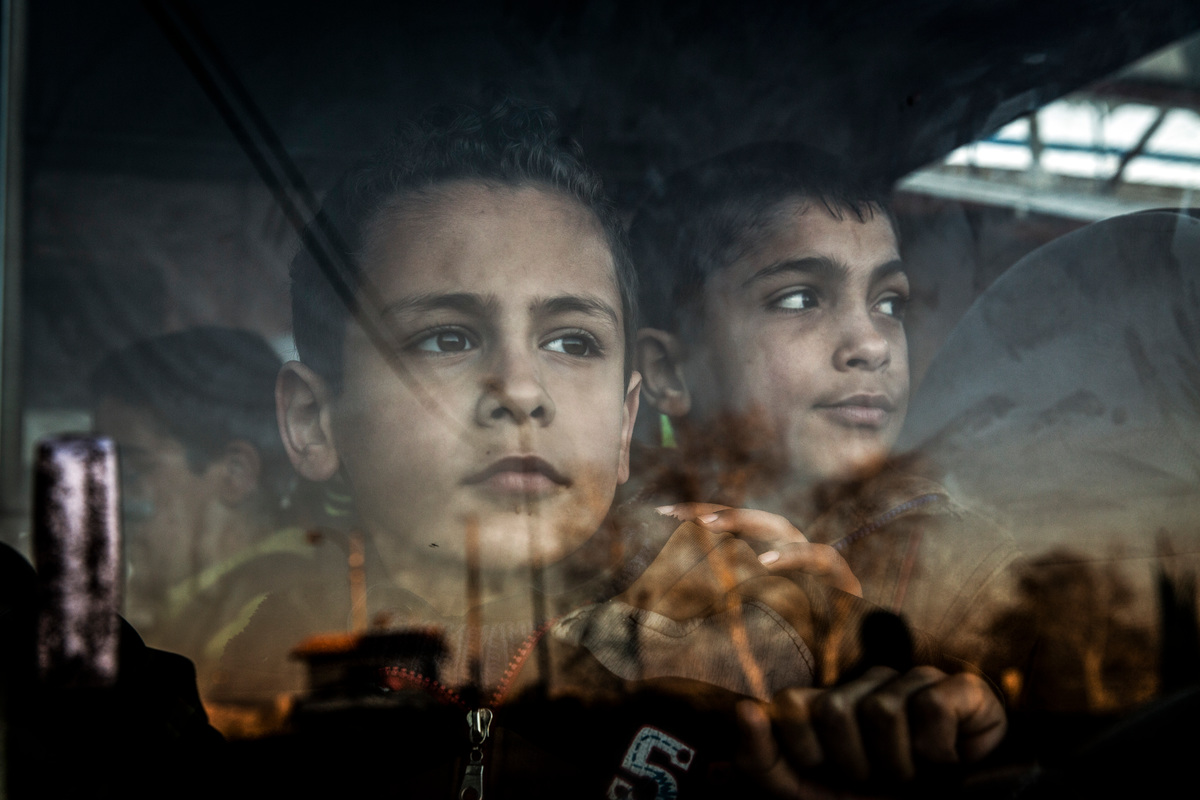UNHCR releases 2001 global refugee statistics
UNHCR releases 2001 global refugee statistics
18 June 2002
GENEVA - The number of refugees of concern to UNHCR worldwide remained virtually unchanged at 12 million in 2001, with half a million people fleeing their countries during the year and nearly as many going home.
Refugees from Afghanistan and the former Yugoslav Republic of Macedonia (FYROM) were the largest groups fleeing their country in 2001. Of the 93,000 who fled FYROM, some 90,000 returned home the same year. Nearly 200,000 Afghans fled their war-torn nation in 2001, joining more than 3.5 million who were already outside the country. The 2001 statistics do not reflect the more than 1 million Afghans who have returned so far in 2002.
There were also a number of new, large-scale movements in Africa during the year, with some 188,000 fleeing to neighbouring countries. The main outflows concerned refugees from Angola, Sudan, Democratic Republic of the Congo, the Central African Republic, Somalia, Burundi, Liberia, Rwanda and Senegal.
At the same time, however, some 267,000 African refugees were able to return home, including to Sierra Leone, Somalia, Eritrea, Burundi, Rwanda, Angola, Ethiopia and Sudan.
(Some 3.8 million Palestinians - who come under the mandate of UNRWA - are not included in UNHCR's statistics.)
In addition to refugees, UNHCR also works on behalf of returned refugees, asylum seekers, certain groups of internally displaced people (IDPs), stateless persons and others affected by war and conflict.
Although the number of IDPs of concern to UNHCR dropped by more than 800,000 during the year, there were some worrisome developments involving new internal displacement in 2001. In Afghanistan, an additional 511,000 people were displaced in 2001, bringing the total displaced population of concern to UNHCR there to 1.2 million. Some of them went home in early 2002.
According to government figures, Colombia saw the second largest increase in internal displacement of concern to UNHCR in 2001, up 190,500 to 720,000. This largely accounts for a 30 percent increase in the total population of concern to UNHCR in Latin America and the Caribbean. Colombians were the seventh largest group of asylum seekers worldwide in 2001.
Other major internal displacements during the year occurred in Liberia, where there were 112,000 newly displaced, and FYROM, with 74,500. By year's end, however, 58,200 of those in FYROM had gone home.
On the positive side, there were major returns of internally displaced people to their place of origin in Eritrea (more than 1 million), Bosnia and Herzegovina (80,000), Burundi (42,000) and Croatia (10,700). In addition to the more than 1 million Eritrean IDPs who went back to their homes in 2001, some 33,000 Eritrean refugees returned from Sudan. UNHCR announced in May of this year that it is ending refugee status for Eritreans as of the end of 2002.
Also on the positive side was a decrease of 700,000 stateless persons, forced migrants and others of concern to UNHCR, mainly in the countries of the Commonwealth of Independent States (CIS). Working with UNHCR, CIS countries have worked over the past decade to find solutions for these people, many of whom have been able to acquire citizenship or other legal status to enable them to integrate.
The decreases in IDPs and others of concern, plus a decline in the number of refugee returns, largely account for a decrease of 2 million in the overall population of concern to UNHCR - from 21.8 million in 2000 to 19.8 million in 2001.
Statistics on IDP numbers are often more difficult to establish than those of refugees crossing international borders. Thus, IDP numbers are often based on estimates, with significant differences between various sources of data.
Approximately 923,000 people applied for asylum worldwide in 2001, compared to just over 1,092,000 in 2000. Major origins of asylum applicants in 2001 included Afghanistan, Iraq, Turkey, Yugoslavia, China, Democratic Republic of Congo, Colombia, Russian Federation, Somalia and Iran. The number of asylum seekers whose cases were still pending at the end of the year was 940,800, compared to 900,700 at the beginning of 2001.
Currently, an estimated 7.7 million people under UNHCR's care are children below the age of 18. The percentage of refugee children ranges from 57 percent in Central Africa to only 20 percent in Central and Eastern Europe. On the other hand, refugees above 60 years of age constitute more than 15 percent of the population in Eastern Europe and the Balkans, whereas in Africa they generally represent less than 5 percent of the population. In most regions, women and girls of all ages constitute between 45-55 percent of the refugee population.









